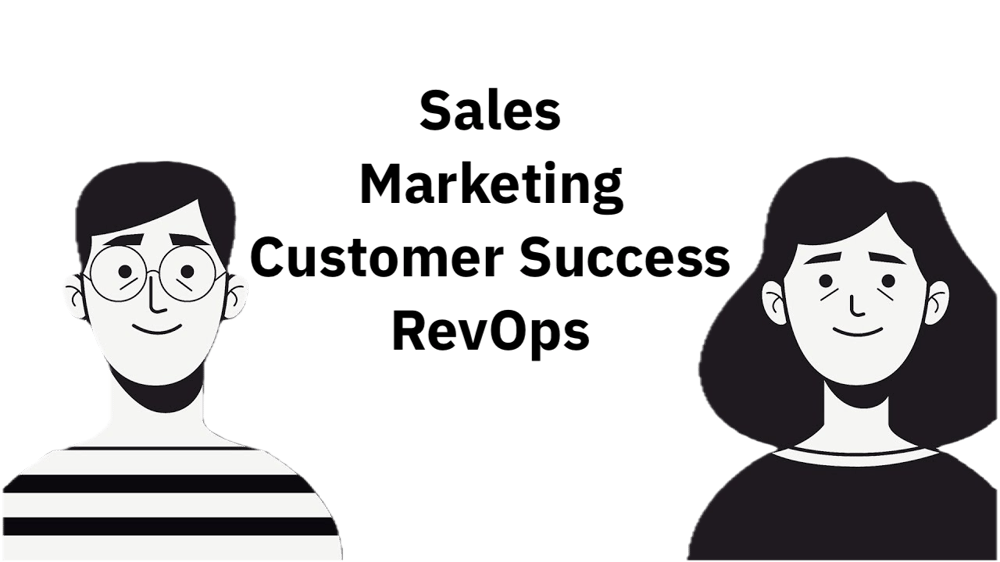Must-Know B2B SaaS Revenue Terminology
Oct 27, 2024 5:47:56 AM Ahmed Yousef

Mastering B2B sales terminology is essential for revenue teams aiming to excel in a competitive market. Dive into our comprehensive guide to stay ahead.
Key Metrics Every B2B Sales Team Should Track
Tracking key metrics is vital for the success of any B2B sales team. These metrics provide valuable insights into the performance and effectiveness of sales strategies, helping teams to identify areas for improvement and optimize their efforts.
Some of the most important metrics to track include:
TAM (Total Addressable Market): The total market demand for a product or service. It’s the maximum potential revenue opportunity available to a business if it captures 100% market share.
SAM (Serviceable Available Market): The portion of the TAM that fits within your business’s geographical and product/service capabilities.
SOM (Serviceable Obtainable Market): The segment of the SAM that you can realistically capture, considering factors like competition and market conditions.
MVP (Minimum Viable Product): A simplified version of a product that solves the core problem for early adopters, allowing you to gather feedback for future development.
Burn Rate: The rate at which a company spends its capital before generating positive cash flow from operations.
Runway: The amount of time a company can continue operating before it runs out of cash, based on its current burn rate.
MRR (Monthly Recurring Revenue): Predictable revenue a company expects to earn every month from ongoing subscriptions or contracts.
ARR (Annual Recurring Revenue): The yearly equivalent of MRR, representing the recurring revenue expected over a year.
TTM (Trailing Twelve Months): A financial performance measure that shows the revenue a company has earned over the past 12 consecutive months.
ARPU (Average Revenue Per User): The average revenue generated per user or account, useful for assessing individual customer value.
CAC (Customer Acquisition Cost): The total cost associated with acquiring a new customer, including marketing and sales expenses.
LTV (Lifetime Value): The total revenue a business can reasonably expect from a single customer account throughout its relationship.
TCV (Total Contract Value): Total revenue generated from a contract, including recurring and one-time fees over its entire term.
ACV (Annual Contract Value): The average annualized revenue per customer contract, excluding any one-time fees.
Deferred Revenue: Revenue received in advance for services or products to be delivered in the future.
Total Billings: The total invoices sent to customers, including deferred revenue and amounts yet to be collected.
MAU (Monthly Active Users): The number of unique users who engage with a product or service within a month.
WAU (Weekly Active Users): The number of unique users who engage with a product or service within a week.
DAU (Daily Active Users): The number of unique users who engage with a product or service within a day.
Conversion Rate: The percentage of users who take a desired action, such as subscribing to a service out of the total number of interested users.
CMGR (Compound Monthly Growth Rate): Represents the month-over-month growth rate of a company’s revenue or users.
CAGR (Compound Annual Growth Rate): The mean annual growth rate of an investment over a specified time longer than one year.
Retention: The percentage of customers who continue to use a product or service over a given period.
Gross Churn: The rate at which customers cancel or do not renew their subscriptions, expressed as a percentage of total customers.
Net Churn: The net loss of revenue from existing customers after accounting for upgrades, downgrades, and cancellations.
Negative Churn: An indicator of success where the revenue gained from existing customers (through upselling or cross-selling) exceeds the revenue lost from cancellations or downgrades.
Zero Marginal Cost: The concept that producing an additional unit (like adding a new user) doesn’t incur extra production costs, common in SaaS models.
Understanding the Sales Funnel Stages
The sales funnel represents the journey potential customers go through from initial contact to final purchase. Understanding each stage of the sales funnel is crucial for effectively guiding prospects towards a purchase and optimizing sales processes.
The main stages of the sales funnel typically include Awareness, Interest, Decision, and Action. By clearly defining these stages and understanding how prospects move through them, sales teams can tailor their strategies to meet the needs of potential customers at each point in their journey.
Crucial Sales Tools and Technologies
In the digital age, leveraging the right sales tools and technologies is essential for maximizing efficiency and effectiveness. These tools can help automate processes, manage customer relationships, and provide valuable analytics.
Some of the most crucial sales tools include Customer Relationship Management (CRM) systems, email marketing platforms, sales enablement software, and analytics tools. By integrating these technologies into their workflows, sales teams can streamline operations and enhance their overall performance.
Common Sales Acronyms and Their Meanings
The B2B sales industry is full of acronyms that can be confusing for newcomers. Understanding these acronyms is essential for effective communication and staying informed about industry trends.
Some common sales acronyms include BANT (Budget, Authority, Need, Timeline), MQL (Marketing Qualified Lead), SQL (Sales Qualified Lead), and ROI (Return on Investment). Familiarizing yourself with these terms will help you navigate the sales landscape more confidently and communicate more effectively with colleagues and clients.
Effective Communication Strategies in B2B Sales
Effective communication is a cornerstone of successful B2B sales. Building strong relationships with clients and prospects requires clear, concise, and persuasive communication.
Some key strategies for effective communication include active listening, personalized messaging, and timely follow-ups. By honing these skills, sales professionals can build trust, address client needs more effectively, and ultimately close more deals.
